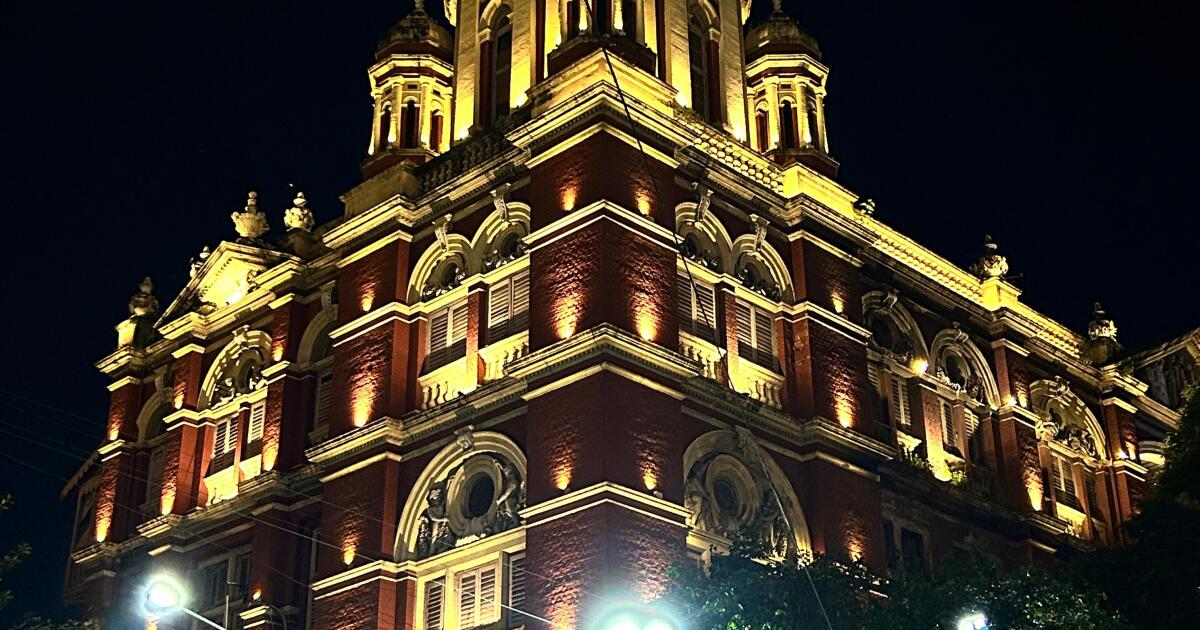When my father died over two decades ago, my mother told my little niece that her dadubhai, or grandfather, had become a star. They stood on our balcony in Calcutta, looking at the night sky and trying to find the “Dadubhai Star”.
In childish euphemism, death became a star.
I remember looking up at the sky the night my mother died this year. There was no longer any need for childish euphemisms. And it was just as good. The bright lights of the city had long since swallowed up the darkness. The night sky seemed starless. Only a handful were still visible. Maybe they weren't even stars, just satellites.
Although we suffer from many types of pollution, we pay little attention to light pollution. It doesn't smell. It doesn't clog our lungs or our waters. It doesn't make us deaf. It's hiding in plain sight. Even I didn't think too much about it until recently.
This is Sandip Roy in Calcutta
At the end of August, I took a Kolkata Illuminated night tour. The Kolkata Illumination Project by a citizens group called Kolkata Restorers has been illuminating old historic buildings for some time now – huge colonial buildings that house insurance companies and banks, an old market, synagogues, and churches and temples
TOUR SOUND
The buildings look quite impressive during the day, but the warm yellow, low wattage LED lights make them come to life in a different way at night. They looked mysterious and beautiful.
A few weeks later, in the run-up to the Durga Puja festival, I saw huge billboards popping up next to a park near me. They were LED screens. It felt like being surrounded by a series of television screens showing ads for leggings and cooking oil, their shocking pink, red and yellow neon lights screaming for attention. They looked garish and hideous.
The electric light bulb is actually one of our greatest inventions. Having grown up with chronic power outages, I have no desire for the “pleasures” of reading by the light of hissing Petromax lamps and candles. But there is such a thing as too much light at a time when our internal clock tells us it should be dark.
Just as air pollution and water pollution are linked to a range of illnesses, light pollution can also wreak havoc within us. A report in IndiaSpend cites numerous studies showing the connection between excessive exposure to artificial light and health problems, stress and sleep disorders, as well as reduced production of melatonin, the hormone produced at night.
But when the Journal of Urban Management surveyed Indians aged 16 to 65 in 2022, it found that 57% had never heard of the term “light pollution.”
The most revolutionary thing about the Kolkata Illumination project is its always muted yellow lighting. Mudar Patherya, the driving force behind Kolkata Restorers, told me that many people who were impressed by the illuminated buildings wanted to do the same but wanted bright DMX or digital multiplex lighting with changing colors.
MP1:
And he would have to dissuade them and tell them it wouldn't look good on the building.
It's a difficult lesson to remember in a world where the mantra of success has become bigger and brighter. Things of quieter beauty are neglected. A city full of lights is, so to speak, proof that India shines.
But darkness is also an old friend. Last month I spent a few days in a nature reserve in Thailand. One night we were on a floating raft house in a huge lake in southern Thailand, surrounded by limestone karst. The huts were modest and solar powered. There was no connectivity anyway. The sunset was a stunning glow of orange and gold, but as darkness fell, I wondered what we would do all night without a phone or internet, just staring into the inky darkness. But as I sat on the deck overlooking the vastness of the lake, I realized that when I looked up, the sky was finally dotted with stars. I was finally in a place where, as Ray Bradbury wrote in “I Sing the Body Electric,” the lights couldn’t darken the universe.
I immediately wanted to identify the constellations, then discovered to my chagrin that my stargazing apps wouldn't work without connectivity. So we just sat there with beers, listening to the waves and looking at the stars we couldn't name.
And suddenly it seemed to me that the old stories we made up, that parents who become stars weren't so silly and childish after all.
This is Sandip Roy from Calcutta for Law
